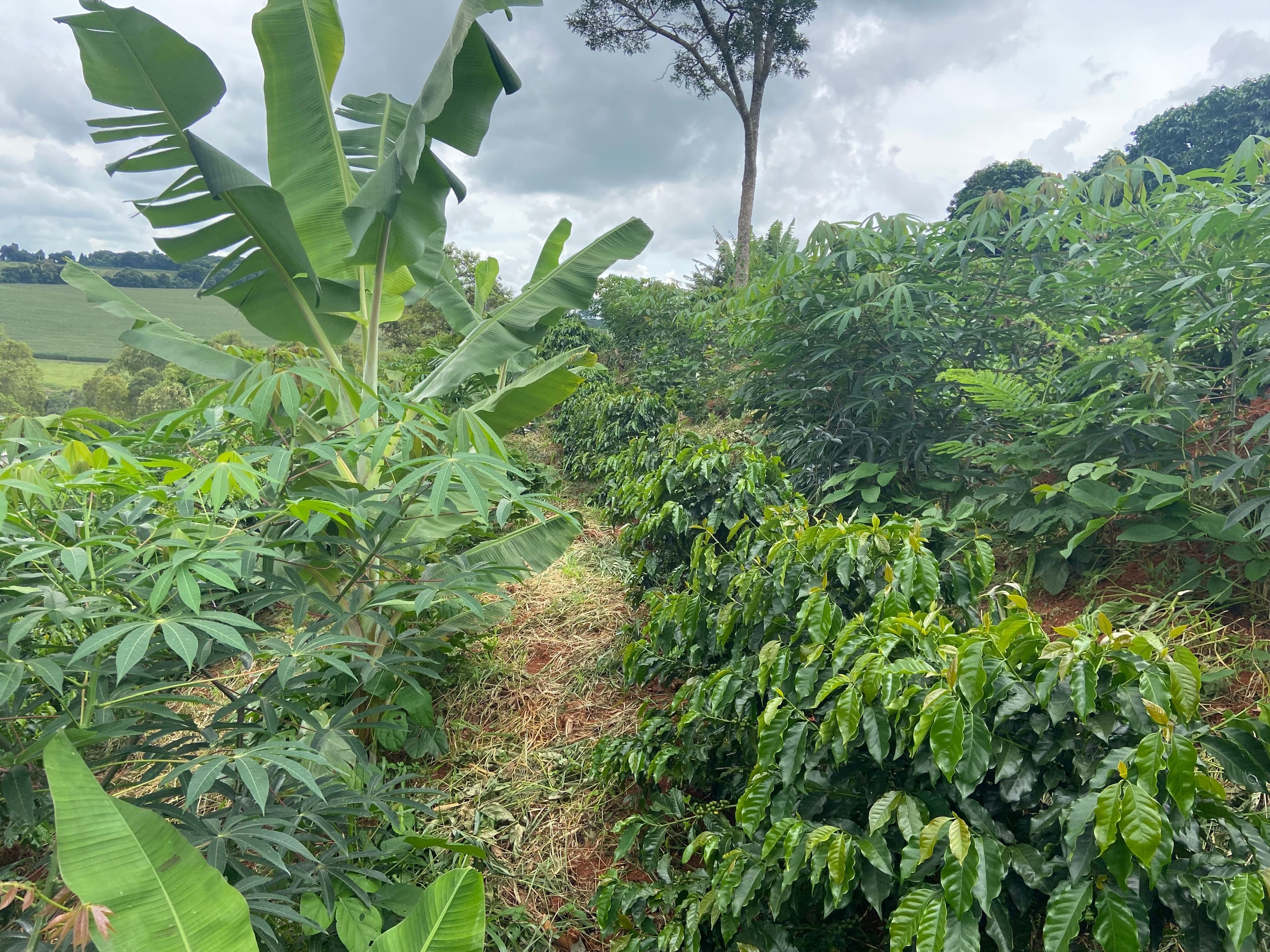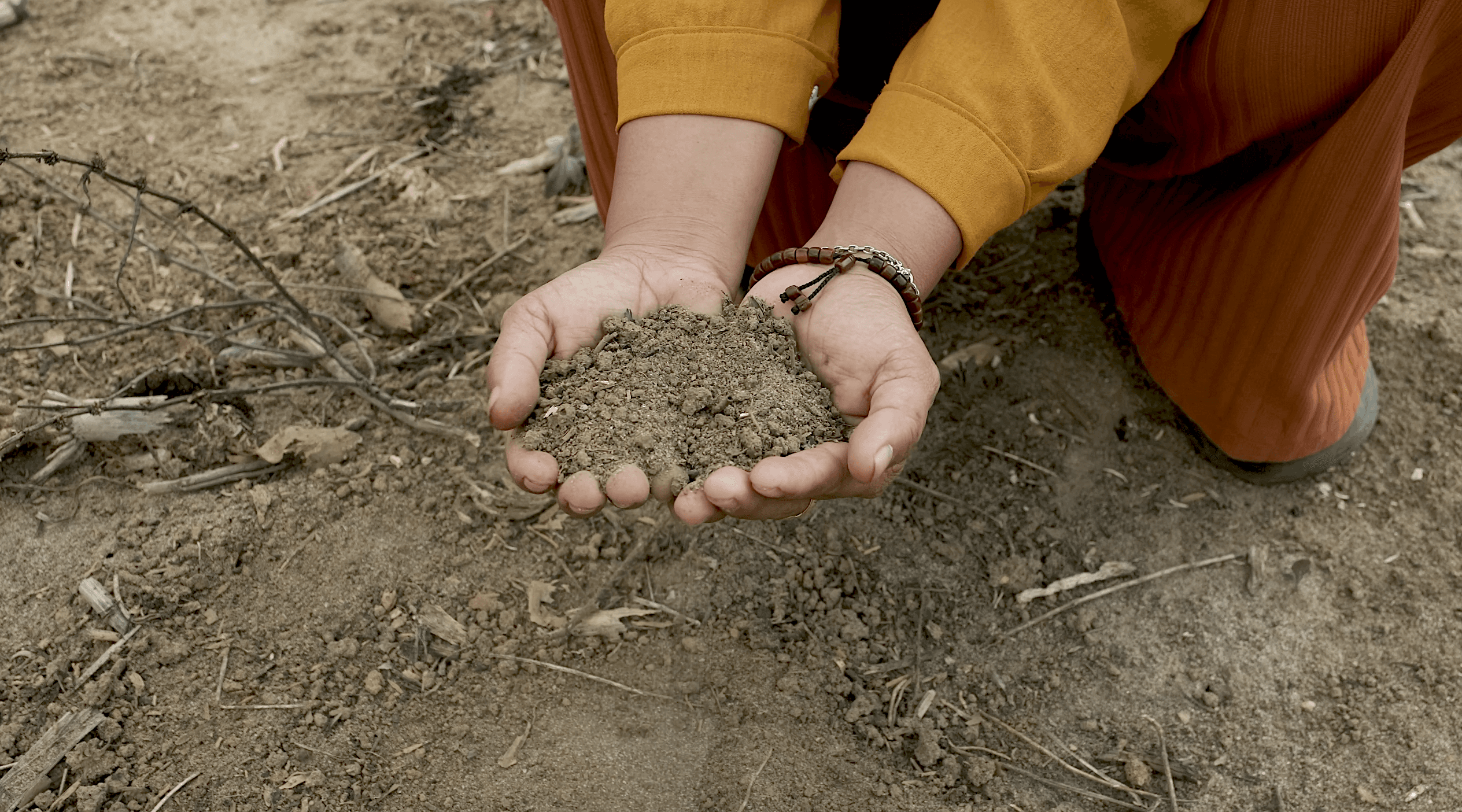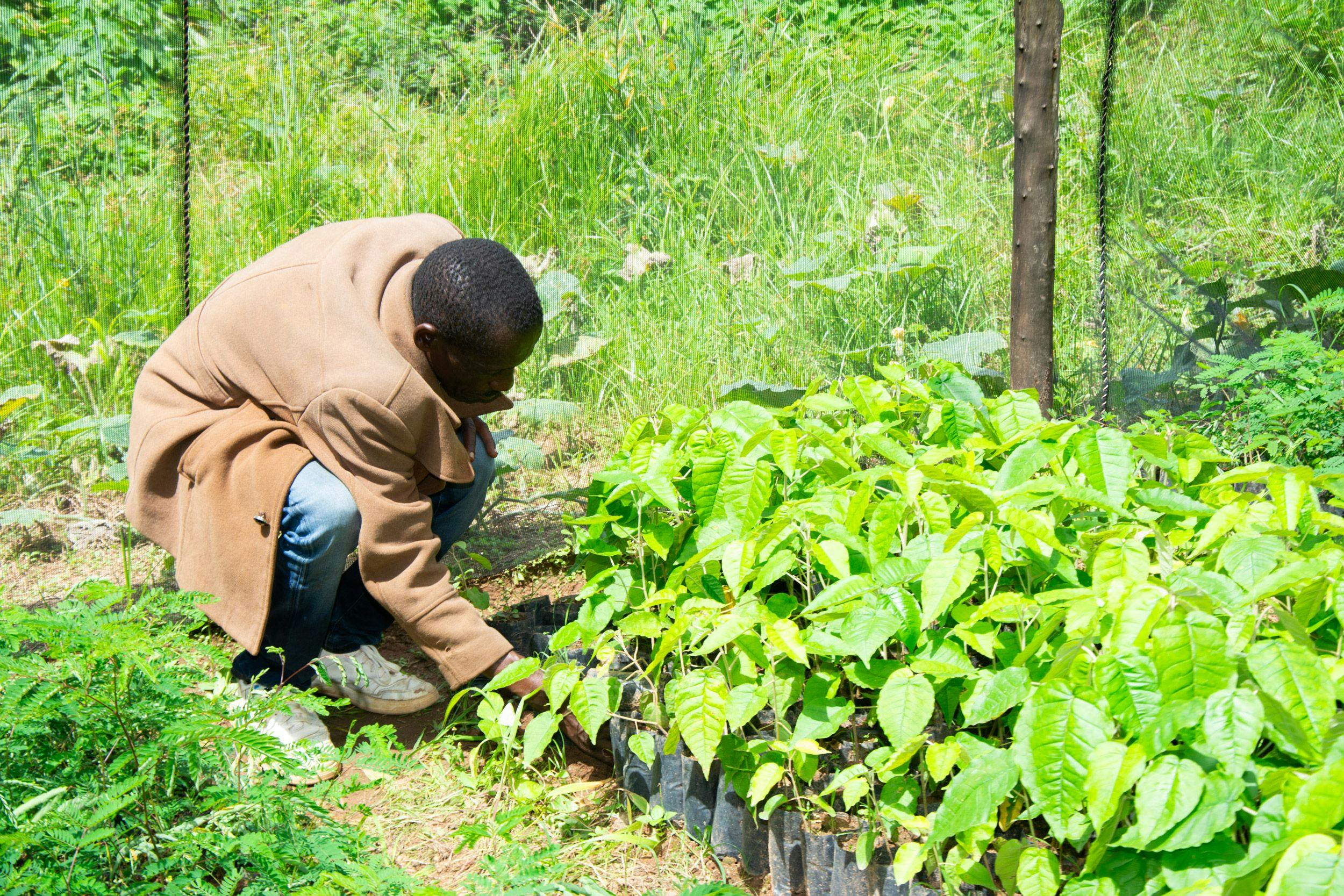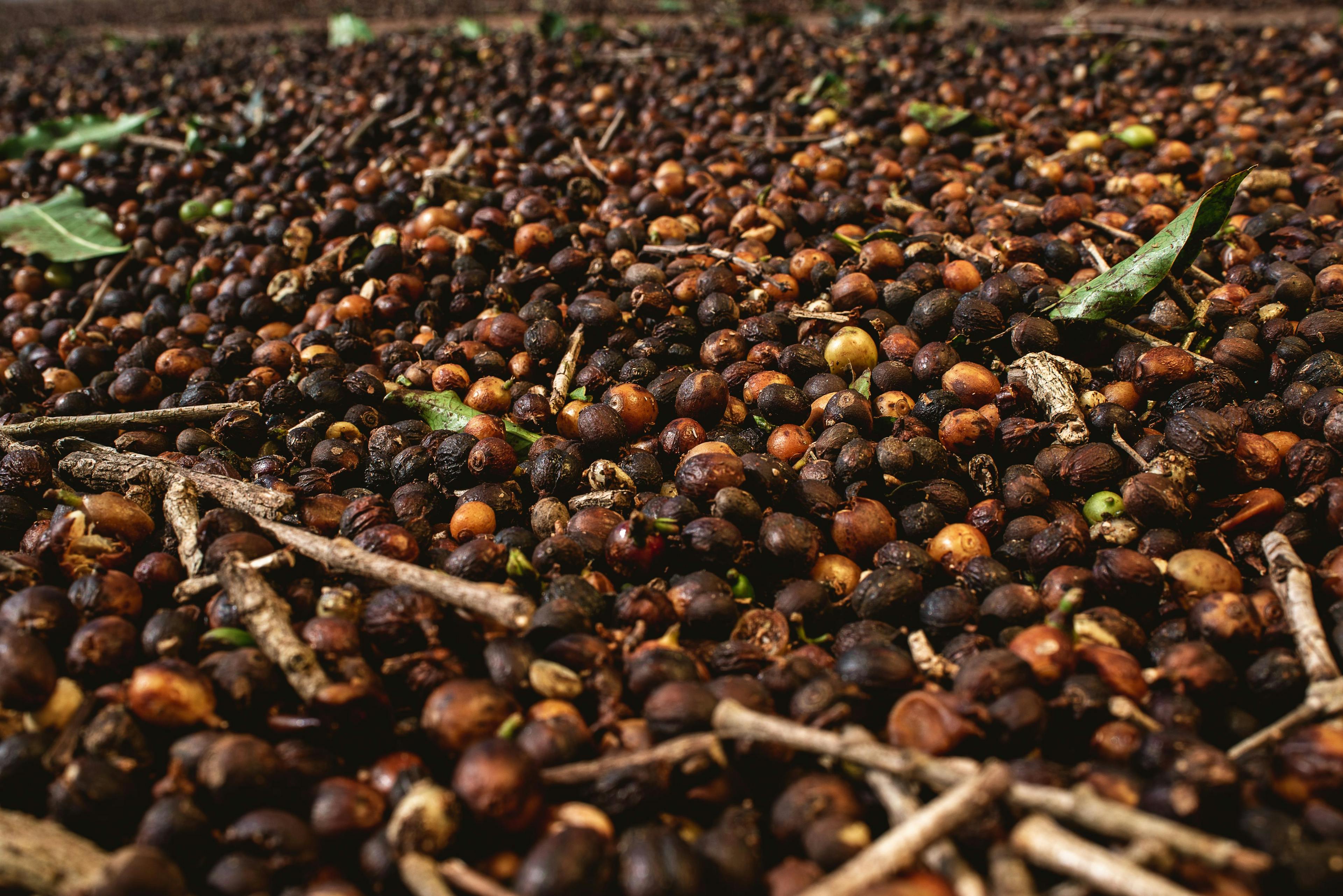Making Coffee Production Circular: Turning Waste into a Valuable Resource

Circular economy in coffee production: The potential to reuse coffee pulp, organic waste from pruning and other field activities as well as waste water from coffee processing is underestimated. Used efficiently these wastes can enhance the productivity of coffee farms and help to reduce the use of agrochemicals. Their use can also support the protection of natural resources and the effects on the carbon cycle can be favorable. Ultimately, proper waste management may open up business opportunities for coffee farmer families and their cooperatives.
To release these potentials, Hanns R. Neumann Stiftung (HRNS) together with Melitta Group initiated a new project on circular economy in coffee production in Brazil The intervention aims to identify possibilities to reuse and recycle waste in coffee production. The project is implemented in the federal state of Minas Gerais in Brazil.
“Our project comprises three important innovations”, explains project manager Stefan Ruge at HRNS: “This is the first project to deal with the question of waste management in coffee production in a systematic and comprehensive way. The second aspect is that the results will become a public good – accessible for everybody.” It is planned to share the resulting, valuable knowledge gains with other actors in the sector. The last and perhaps most important facet for HRNS is the idea to develop business cases as part and parcel of the project.
We will support regional youth to enable them to establish innovative start-ups using the knowledge on approaches and practices of circular economy generated by the project. Some seed capital is reserved to support these processes.
In order to develop recycling products that can be marketed by regional youth a thorough analysis and testing of waste materials and its processing has to forego the implementation as well as an assessment of the economic value of the different processed recycling products. The obvious concept is to use organic waste from coffee farming to either save money in coffee production, raise yields or enhance the quality of the harvest.
The simplest method to start processing coffee is to dry the berries. In the next step the dried fruits have to be hulled which either is done by farmers cooperatives or by specialized coffee hullers. Large estate farms may hull their coffee in-company. Hulling dried coffee generates organic waste called husk which comprises the external parts of the coffee berry. This organic waste contains a diversity of plant nutrients like nitrogen, phosphorus and potassium. However, in order to realize its full potential as fertilizer it needs further processing. Although it is possible to let the organic matter simply rot until it has turned into compost the use of special bacteria leads to superior results. This method of horticultural composting originated in Japan and the resulting product is called Bokashi.
Another possibility is to ferment the coffee berries through a wet process. This method yields a variety of residue like pulp and parchment and the water in which the berries had been fermented. These byproducts– as well as the silver-skin which is derived from the roasting process and even the ground after consumption – contain important plant nutrients in high concentration too. Like husk, these substrates need additional treatment before they their optimum as compost or fertilizer.
There are basically three options to process these diverse organic wastes: composting, charring and co-composting. It is important to note, that all three recycling processes can be combined and handled on an artisanal as well as on an industrial scale. This makes it possible to optimize the processes according to the respective source of the byproducts and their planned use.
Of the three methods mentioned above, charring is the most promising: The resulting product is called Biochar. Like charcoal from wood, Biochar is produced by charring vegetable-based materials under oxygen-restricted conditions. The resulting tiny carbon structures have a large surface area with a very high chemical exchange capacity. Added to soil – especially to heat- and drought-degraded soil – Biochar can rapidly improve the soils texture and its ability to store and subsequently release nutrients. Preliminary tests have shown that it is possible to reduce the input of conventional fertilizer and simultaneously raise yields up to 17 % with properly managed coffee husk fertilization. (“Coffee and the circular economy“, Dr. Leônidas Melo, www.researchgate.net/profile/Leonidas-Melo)
“Although we are still in the takeoff phase of the project we already can provide both – interested stakeholders who want to work with organic waste on their coffee farms as well as experiences with different methods that can even be quantified to a certain extend”, explains Silvia Torres, the local project coordinator of HRNS. “For example, we work together with a smallholder who uses Bokashi compost on his farm. The really tricky questions are those regarding the inputs of money and work. Both differ a lot”, she continues. According to preliminary results the use of organic compost requires about seven times more work than the spread of chemical fertilizer. However, during a season at least one of three fertilizing campaigns can be compensated by means of organic fertilization. “And that is not the end of the story,” Torres adds. “We know for example that the requirement for potassium drops even further when Bokashi is used regularly.”
To estimate the progress in the use of Bokashi the amount of organic matter (OM) in the soil must be measured over a longer period. “Before this producer started using Bokashi in 2012, the OM on his soil amounted to 17.8 grams per kilogram soil,” Torres recalls. “In 2018 it had risen to 27 g/kg and in 2020 it had practically doubled reaching 33.5 g/kg.” Organic matter helps the soil storing water but also acts directly on soil fertility because it is the main source of plant nutrients. In addition it increases the capacity of nutrient retention, avoiding their losses. Another indirect impact of organic matter on soil fertility lies in its ability to lower the acidity of the soil. This leads to an increased availability of nutrients for the plant. “We can prove this too,” says Torres and explains: “The measurement for acidity is the pH value. “In the soil of the plots in question the pH value rose from a quite sour 4.9 in 2012, to 5.4 in 2018 and to 5.58 in 2020.” In comparison the juice of a lemon has a pH value of 2.4 and a neutral environment reaches a pH value of 7.
“Organic fertilizing does not only enhance the soil quality but also the quality of the coffee and its market price”, concludes Torres. This can amount to substantial gains: “Our smallholder was able to sell his coffee for 90 Euro / bag while the average in the region was 81.5 Euro. His total costs amounted to approximately 55.35 Euro whilst the average for the region was 61.35 Euro / bag.” Torres is confident that these results hint to sufficient space for additional recycling services that provide jobs and livelihoods while simultaneously paving the way for circular a coffee production.
But there is more to recycling organic waste than meets the eye of the coffee producer and consumer. Reusing organic materials not only improves soil fertility. It can also help reducing carbon emissions.
The organic matter that is inserted into the soil will be bonded in it and with it the carbon of which it consists. If the soil is managed correctly afterwards, the carbon may stay in it for thousands of years. “This process is called biological carbon sequestration and is most effective when soils have been depleted of its carbon and nutrients because of preceding mismanagement”, Ruge summarizes.
For Melitta as international coffee company it is important to contribute to the sustainability challenges in the coffee sector, says Stefan Dierks, Director Sustainability at Melitta Group: “We believe that with this commitment we will find holistic solutions to the manifold ecological and economic challenges. Ideally, we manage, for example, to significantly reduce the use of artificial fertilizers in coffee cultivation and optimize the carbon balance of production systems.”
However, the concept is to customize the outcome in order to apply it in in other coffee production areas. In 2020 world coffee harvests reached nearly 172 million bags of coffee which sums up to 10.32 m metric tons. In Brazil, the biggest coffee producer globally, production in 2017 has resulted in approximately 3.37 m tons of organic waste (according to ibid) besides different kinds of inorganic wastes. Figures of this scale make it safe to claim that cheap, reliable and sustainable methods of recycling organic waste from coffee production have a lot of potential if they can contribute significantly to overall productivity. Bearing this in mind it is easy to imagine that a comprehensive handbook on waste management in coffee production derived from practical experiences can become a powerful tool for everybody in the industry on the way to a circular sustainable economy in the sector.



